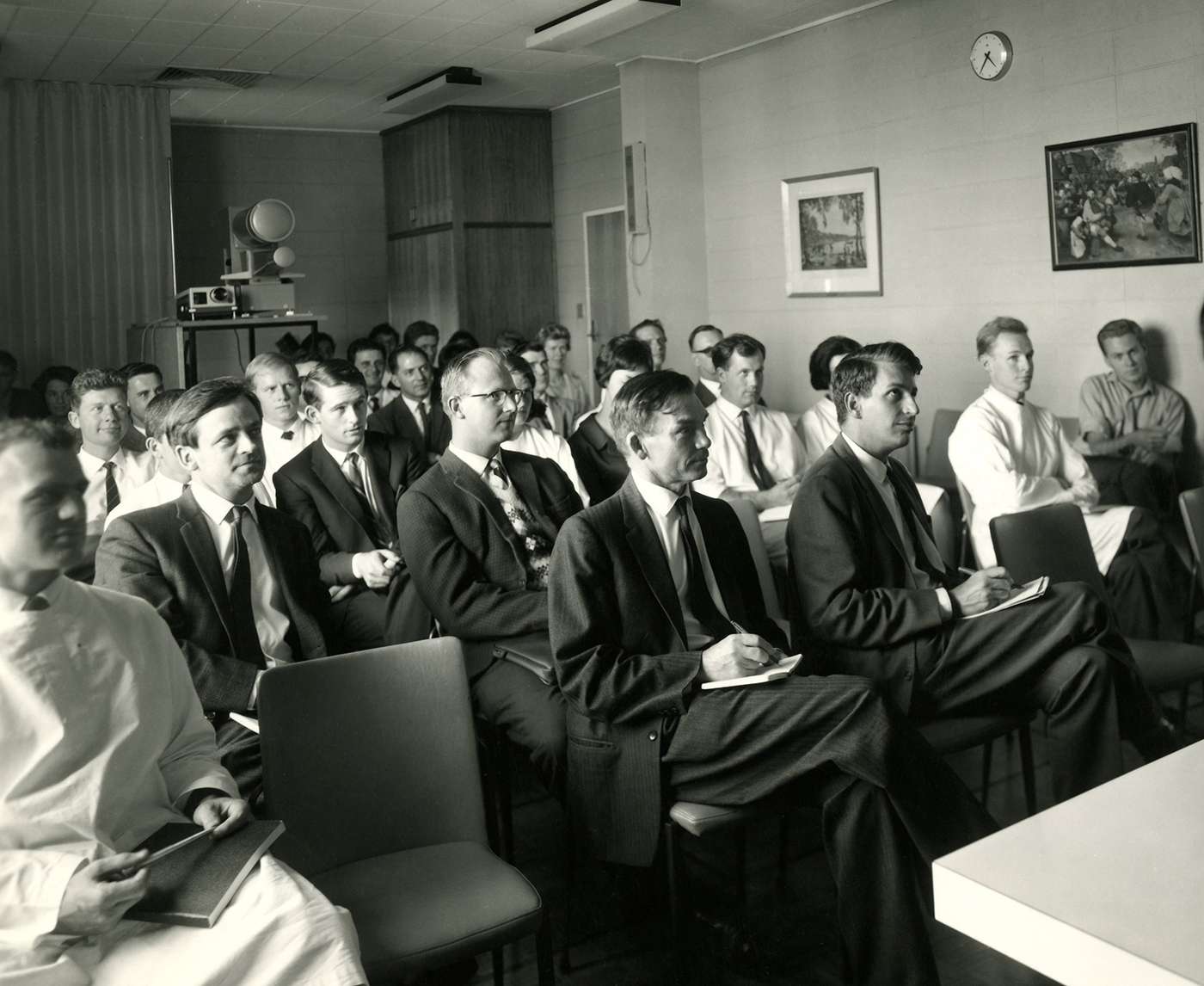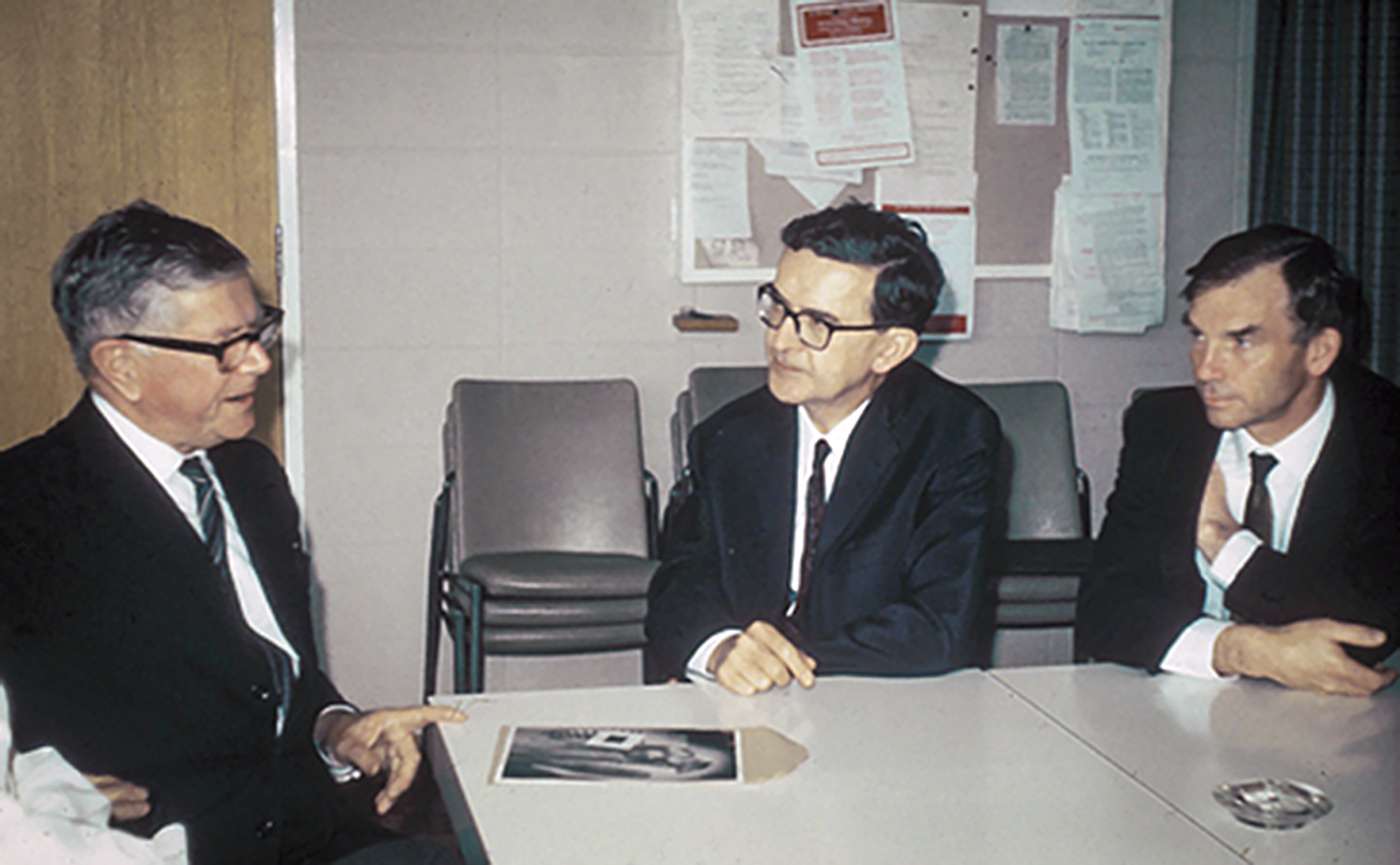Sir Frank Macfarlane Burnet’s protégé Gus Nossal had been at the Walter and Eliza Hall Institute for less than a year when, on 2 August 1957, Burnet showed him his draft paper on clonal selection theory and asked him to ‘think about it’.
The young scientist is interested. In a way, luck is on his side. Burnet is excited at the prospect of obtaining the first evidence for his clonal selection theory, and Nossal is ambitious and eager to impress Burnet.
He comes back to Burnet with an idea. ‘Well, Sir Mac, I can’t prove your theory but I have got a natty way of disproving it.’
‘Disproving’ clonal selection
Nossal reasons that because clonal selection theory holds that each B cell is activated by only one antigen and produces only one antibody, if one cell simultaneously produces two or more antibodies the theory is shot.
He asks Burnet if he can work with Professor Joshua Lederberg, a Stanford University Professor and molecular biologist coming to the institute for a three-month sabbatical in November. Lederberg had been working on the development of bacterial genetics, for which he later shared a Nobel Prize in 1958, and wanted to extend his ideas and techniques to viruses.
Though Lederberg was initially interested in the institute’s work on flu virus genetics, his interest is piqued by the clonal selection. He spends almost his entire period in Australia working with Nossal, developing the first experimental tests for the clonal selection theory.
A clever approach
Nossal knew of Lederberg’s work with single bacteria and thought these would lend themselves to his experiment. By serendipity, Nossal has come across a new technique that could be used to manipulate and isolate single cells to test the theory.
As Vivianne de Vahl Davis wrote in her thesis A History of the Walter and Eliza Hall Institute of Medical Research 1915-1978:
“Nossal, with most immunologists at the time, did not have too much confidence in the clonal selection theory but one way to determine its worth was to see if it worked.
“His discovery of the single cell experiment may have been serendipity but his recognition of its potential was a combination of intellectual ability and a search for success: or, in Pasteur’s words “chance favours the prepared mind.”
Decent microscopes are scarce at the institute so Nossal adapts his own ‘dirty old microscope’ for use by inserting an Australian penny in it to create a dark background to highlight the bacteria. He has to borrow a micromanipulator to move cells around from ‘my friends in the bug school’ (The University of Melbourne’s microbiological department) and learns the basics of micromanipulation from Lederberg.
One cell, one antibody
Lederberg suggests using Salmonella bacteria for the experiment. Their plan is to determine whether single lymph node cells – the cells that in theory made only one type of antibody – could stop only one bacteria strain. The strains would be added one by one and, if more than one strain of bacteria stopped moving, then the cells must be making more than one type of antibody.
Lederberg has to return to America, leaving Nossal to perform the experiments. Nossal was optimistic when he first saw the flagella on one strain of bacteria suddenly stop moving. But the result wasn’t clear-cut. He spends a few months refining the technique before he can excitedly conclude, ‘one cell – one antibody’.
Nossal and Lederberg publish ‘Antibody production by single cells’ in Nature magazine in 1958. The experiments show that a single immune cell can only produce one type of antibody. This antibody specifically targets one type of infection or ‘antigen’, and can only protect against that particular antigen.
A radical theory is proven
“Our ‘one cell, one antibody’ paper in Nature in 1958 vaulted me prematurely into the ‘big league’,” Nossal later says. He would go on to become one of the best-known immunologists in the world.
“Rarely has one theoretical paper so comprehensively fertilised a discipline or been so thoroughly vindicated,” he reflected on the 50th anniversary of the theory.
This discovery is the foundation of our understanding of what is called ‘adaptive’ immunity – the part of our immune system that is able to recognise and destroy specific targets, and is controlled by B cells (which produce antibody) and T cells, which are soon discovered by Jacques Miller and Graham Mitchell at the Walter and Eliza Hall Institute.






